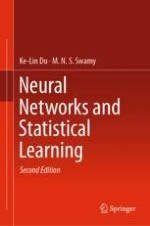2019 | OriginalPaper | Buchkapitel
26. Introduction to Fuzzy Sets and Logic
verfasst von : Ke-Lin Du, M. N. S. Swamy
Erschienen in: Neural Networks and Statistical Learning
Verlag: Springer London
Aktivieren Sie unsere intelligente Suche, um passende Fachinhalte oder Patente zu finden.
Wählen Sie Textabschnitte aus um mit Künstlicher Intelligenz passenden Patente zu finden. powered by
Markieren Sie Textabschnitte, um KI-gestützt weitere passende Inhalte zu finden. powered by
